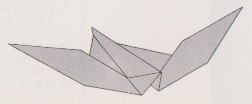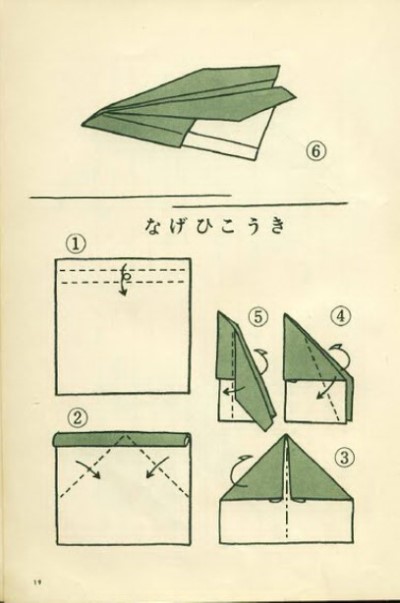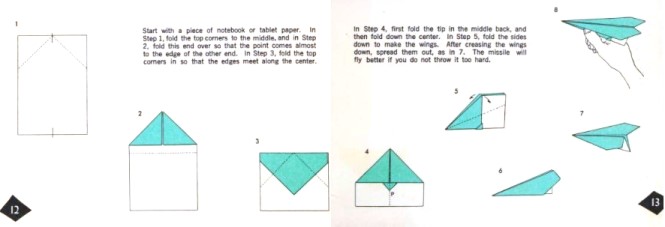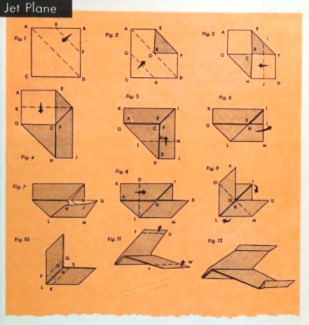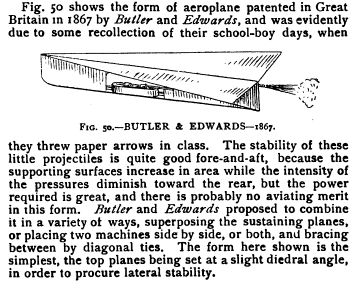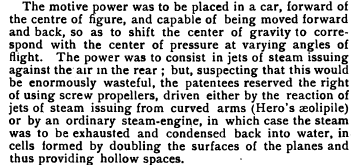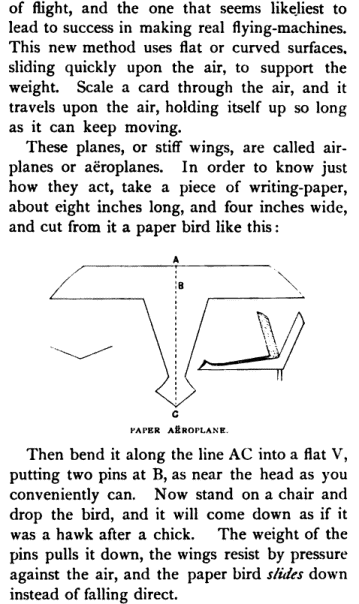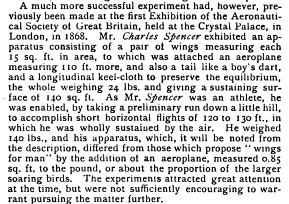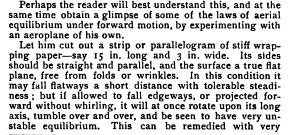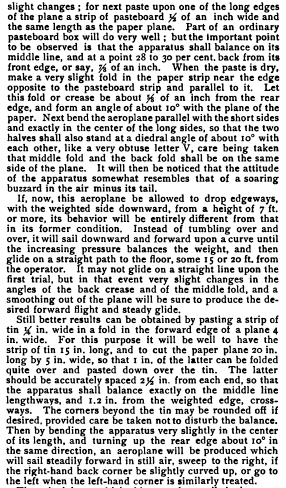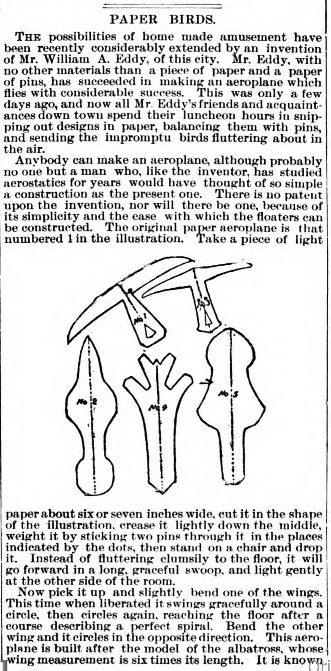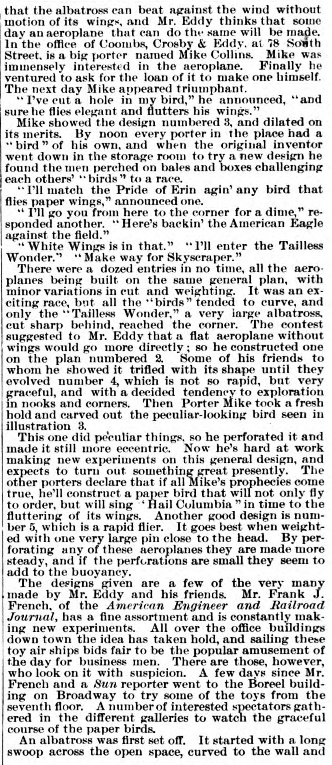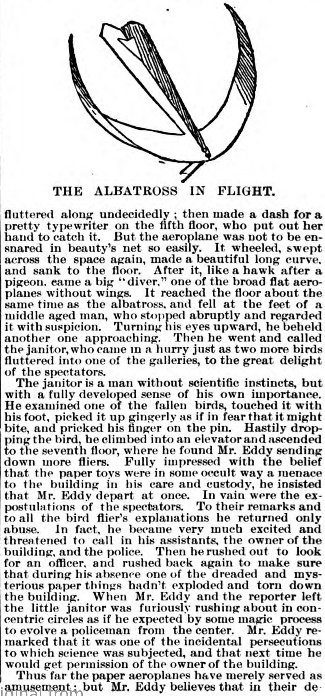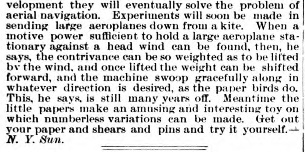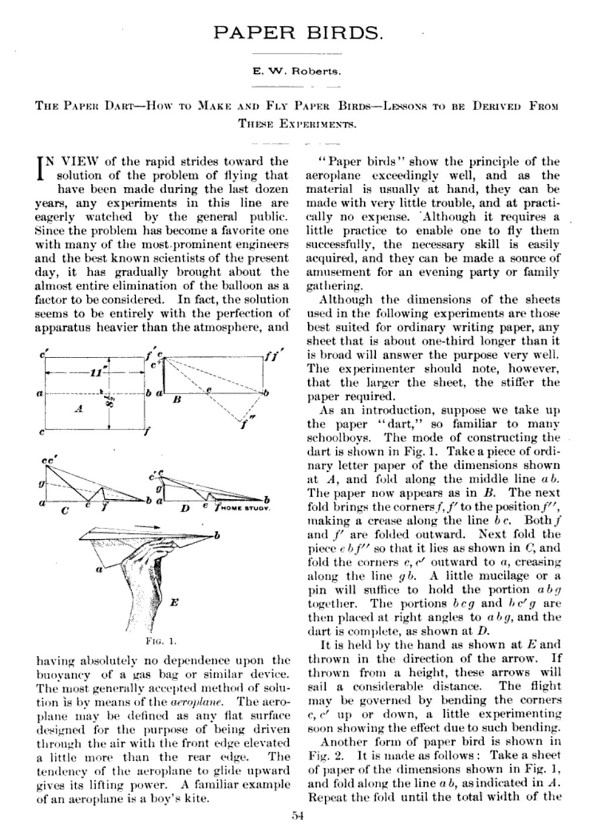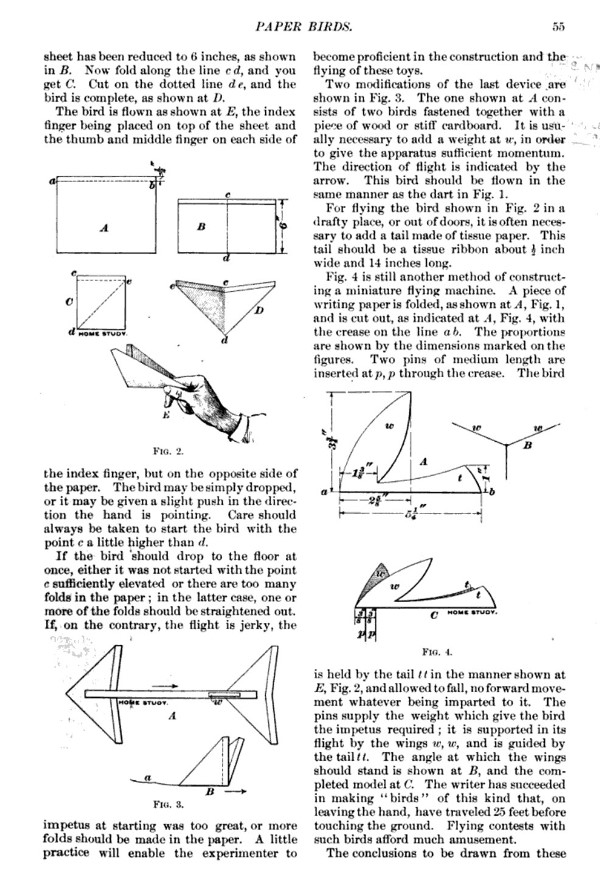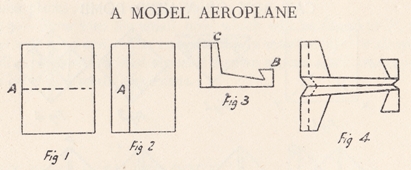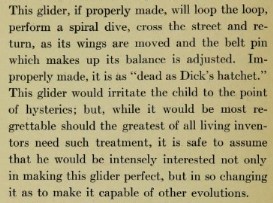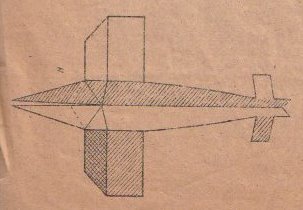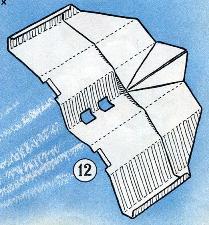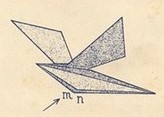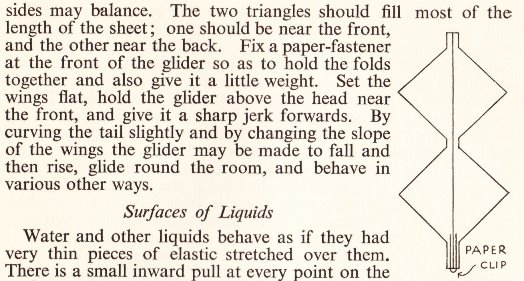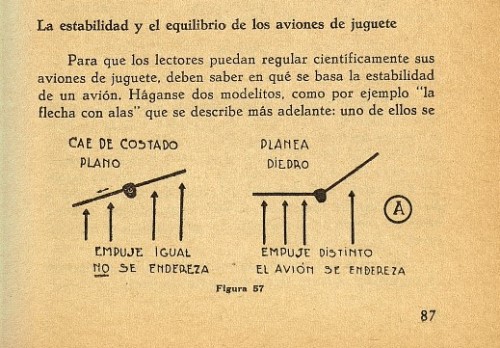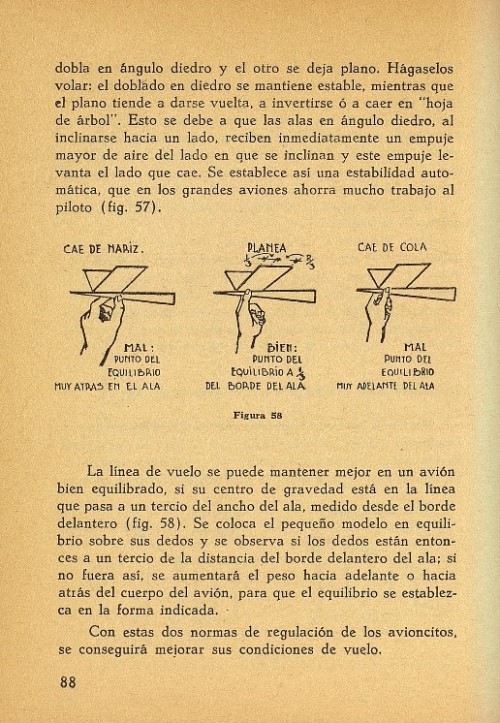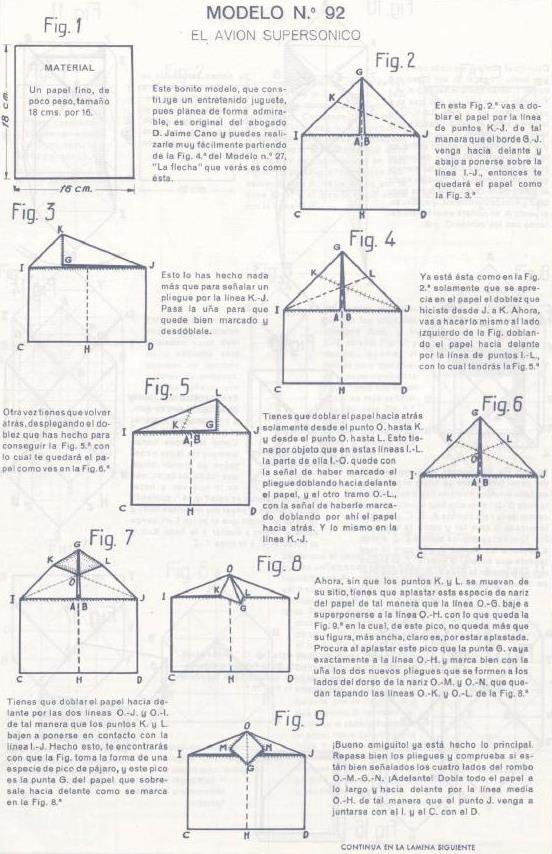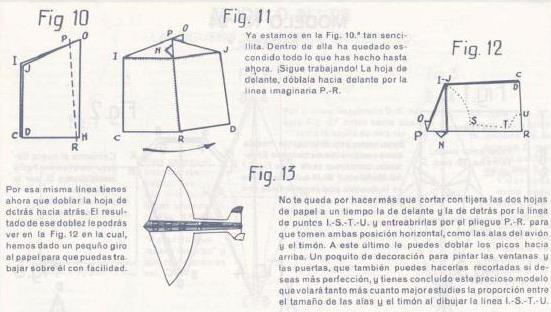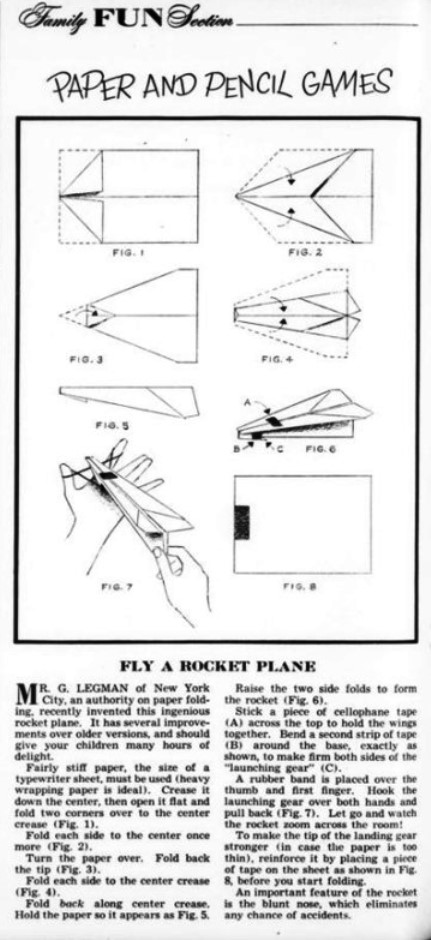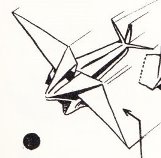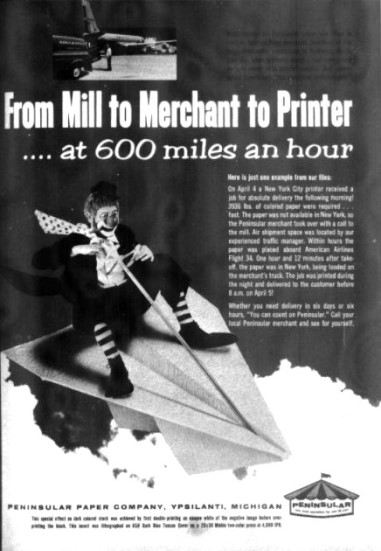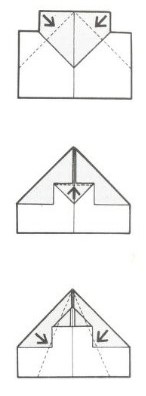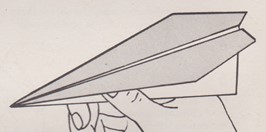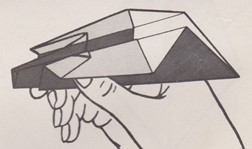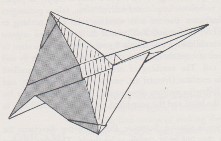| The Public Paperfolding History Project
Last updated 28/4/2024 x |
|||||||
| Paper Planes | |||||||
| This
page is being used to collect information about the
history of Paper Planes and similar gliding objects.
Please contact me if you know any of this information is
incorrect or if you have any other information that
should be added. Thank you. It is commonly stated that paper planes originated in China over 2000 years ago. I can find no evidence whatsoever to back up this assertion. It probably arises due to a confusion between paper planes and paper kites. It is also commonly asserted that Leonardo da Vinci invented the first paper plane, or, at least experimented with them. A discussion of the evidence (or rather lack of evidence) in relation to this assertion is set out on my page 'Was Leonardo da Vinci a Paperfolder?' ********** In China (and in publications by Chinese authors) The Carrier Pigeon - 1914 onwards
********** In Japan (and in pubications by Japanese authors) 1931 A version of the Paper Dart, but folded from a square, appears in 'Origami (Part 1)' by Isao Honda, which was published in Japan in 1931
********** 1957 A paper plane folded from a square appears in 'Origami Dokuhon' by Akira Yoshizawa, which was published by Ryokuchi-Sha in 1957.
********** 1959 A paper plane folded from a rectangle and called 'The Missile' appears in 'How to Make Origami' by Isao Honda, which was published by Toto Shuppan Co. Ltd in Japan, by McDowell Obolensky of New York in the USA and by Museum Press Ltd of London in England, in 1959.
********** 1959 A design for a 'Jet Plane' appears in 'Origami: Book Three' by Florence Sakade, which was published by the Charles E Tuttle Company in Rutland, Vermont and Tokyo in 1959.
********** 1966 Children folding and flying paper planes similar to the Missile were featured in the film 'Origami: The Folding Papers of Japan' made by the Japanese Ministry of Foreign Affairs in 1966. ********** In Europe and the Americas The Paper Dart / The Arrow - 1859 onwards
The Paper Dart is nowadays considered to be a paper plane, but, as its early names suggest, it was not viewed as a paper plane when it was first designed. ********** 1867 In 1867 a patent was issued in Great Britain to Butler and Edwards for a steam powered aeroplane based on the Paper Dart. The details below are taken from 'Progress in Flying Machines' by O Chanute, published in New York by M N Forney, the Foreword to which is dated January 1894.
********** 1886 The April 1886 issue of the American children's magazine St Nicholas contains an article titled 'About Flying Machines' which includes details of a 'Paper Aeroplane'.
********** 1894 'Progress in Flying Machines' by O Chanute, published in New York by M N Forney, the Foreword to which is dated January 1894, contains other mentions of paper darts and experimental paper aeroplanes. From page 16
From pages 73 and 74
********** Also in 1894 an article on 'Paper Birds', which were really bird shaped paper gliders, weighted with pins, was published in the Scientific American Supplement vol 37 on pages 15184/5. It was reprinted from an article in the New York Sun.
********** 1898 The issue of 'Home Study for Machinists, Steam Enginers, etc,' for October 1898 contained an article about Paper Birds (ie what we would now refer to as paper planes).
********** 1910 'Handicraft in the School', which was issued in four volumes by Gresham Publishing in London in 1910, contains a design for 'An Aeroplane'.
********** The Cut and Fold Model Aeroplane - 1917 onwards
********** The Swallow - 1917 onwards
********** 1919 An unidentified paper plane is mentioned in 'Teaching the Sick: A Manual of Occupational Therapy and Reeducation' by George Edward Barton, which was published by W B Saunders Company in Philadelphia and London in 1919.
********** 1924 According to Wikipedia, p38 of the book The Wind and Beyond written by Theodore von Kármán with Lee Edson, published in 1967 by Little, Brown and Company contained the following description of the folding of a paper plane by Ludwig Prandtl at the 1924 banquet of the International Union of Theoretical and Applied Mechanics. 'Prandtl was also somewhat impulsive. I recall that on one occasion at a rather dignified dinner meeting following a conference in Delft, Holland, my sister, who sat next to him at the table, asked him a question on the mechanics of flight. He started to explain; in the course of it he picked up a paper menu and fashioned a small model airplane, without thinking where he was. It landed on the shirtfront of the French Minister of Education, much to the embarrassment of my sister and others at the banquet.' I have not been able to locate this source to check the reference. It is not clear from the context what design this paper plane was. ********** The Dove - 1929 onwards
********** The Flying Fly - 1933 onwards
********** 'Jeux de pliages' by Ferdinand Krch, which was published by Flammarion in Paris in 1933 contains diagrams for a cut 'Avion-Libellule' (Dragonfly Plane).
********** 1940 'At Home Tonight' by Herbert McKay, which was published by Oxford University Press in London, New York and Toronto in 1940, contains a chapter on 'Parlour Science' which includes a discussion of the effect of air pressure on falling objects, particularly paper and cardboard sheets, and 'A very elegant glider'.
********** 1944 'Ideas Practicas para Juegos y Entretenimientos' by Jorge A Duclout, the second edition of which was published in Buenos Aires in 1944 contains information about the stability of paper planes.
********** 1951 A second variation of the Cut and fold Model Aeroplane design, the front of which is weighted in a different way, appears as 'El Avion Supersonico' in the extended version of 'El Mundo de Papel' by Dr Nemesio Montero, which was published by G Miranda in Edicions Infancia in Valladolid in 1951.
********** 1952 A design for a rubber band launched plane, attributed to Gershon Legman, was published in an article by Martin Gardner in 'Parents' magazine for September 1952.
********** 1956 Harbin's Aeroplane appears in 'Paper Magic' by Robert Harbin, which was published by Oldbourne in London in 1956. The text does not give any instruction for launching this plane and it may have been intended to be a static model.
********** 1961 The July-August 1961 issue of 'Print' (Vol 15 Iss 4) contained an advert for the Peninsular Paper Company featuring a paper plane. This is the earliest advert featuring a paper plane that I know of at present.
********** 1963 Two designs for paper planes appear in 'Folding Paper Toys' by Shari Lewis and Lillian Oppenheimer, which was first published by Stein and Day, Inc in the USA in 1963. 'Glider' is characterised by the removal of two small squares in the way shown in the first picture below.
*** Boomerang
********** 1966/7 In December 1966 an advertising agency acting for the journal 'Scientific American' placed advertisements in three American newspapers / magazines, 'The New York Times, 'The New Yorker', and 'Travel Weekly', announcing the 1st International Airplane Competition. Entries were to be submitted by post. Those entries found to fly particularly well in trials were sent forward to the Final Fly-offs held at the New York Hall of Science on 21 Feb 1967. There were four categories of competition, for duration aloft, distance flown, aerobatics and origami. According to the Origamian for ..... entries in the origami category did not actually need to be able to fly. Each category was subdivided into entries submitted by air travel professionals (including subscribers to 'Scientific American') and non-professionals. The winners were to be awarded a trophy known as 'The Leonardo'. Details of the winning entries were subsequently included in 'The Great International Airplane Book' by Jerry Mander, George Dippel and Howard Gossage which was published by Simon and Schuster in New York in 1967. The winner of the Origami-Non-professional category was James M Sakoda's 'SST', which was subsequently published in his book 'Modern Origami' in 1969.
********** |
|||||||
